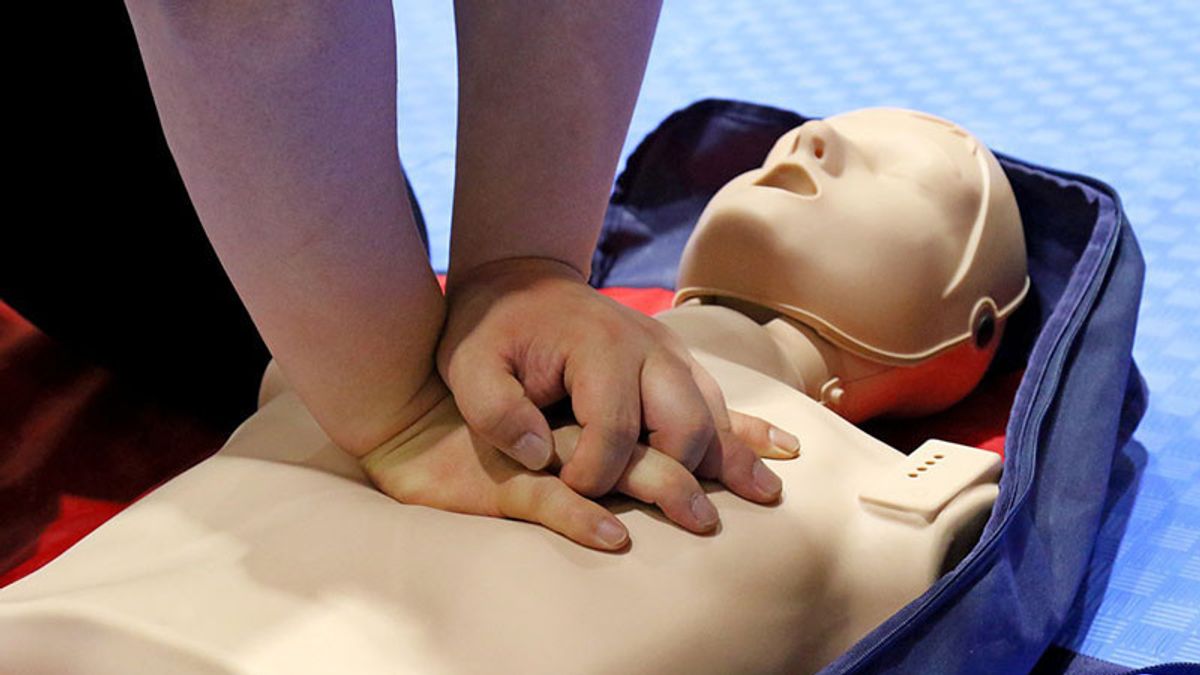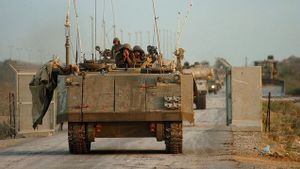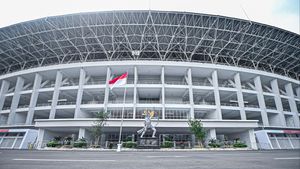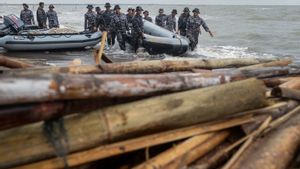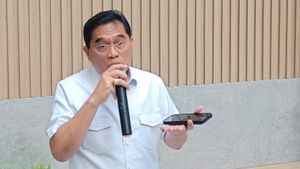JAKARTA - There is no need to panic if you see people suddenly unconscious due to cardiac arrest, because ordinary people can provide help, said Cardiologist and Blood Vessel Specialist from the University of Indonesia, dr. Radityo Prakoso, Sp.JP(K).In the webinar to Save Lives with the Right Resuscitation Technique, Saturday, September 25, dr. Radityo said that everyone can perform Basic Cardiac Life Support (BHJD) as a life-saving measure after cardiac arrest occurs. good," said dr. Radityo.BHJD is a combination of uninterrupted observation and action. The components that must be mastered by rescuers are assessing the patient's condition, good chest compressions, use of an automatic defibrillation device (AED), and assessment of chest movement and providing good breathing assistance. the patient, activate the emergency system, chest compressions, airway, and breathing. "Before helping, make sure the environment is safe for resuscitation. For example, if the patient is in the middle of the road, step aside first, or if he was electrocuted, the power source was turned off first," explained dr. Radityo. "Then why do you have to do chest compressions before airway? Because in cardiac arrest, the average pressure of oxygen in the arteries is generally still good, so giving oxygen in cardiac arrest is not too important," he continued. But during this pandemic, dr. Radityo reminded that in BHJD, rescuers can only perform chest compressions and cannot perform airway and breathing as an effort to prevent transmission of the COVID-19 virus. Furthermore, dr. Radityo said there are slight differences in performing BHJD for infants, children, adults, pregnant women, and patients with special conditions.dr. Radityo said, BHJD for adults can be done if there are indications of cardiac arrest, respiratory arrest, and the victim is unconscious. First, check the response by tapping the patient's shoulder while calling. If there is no response, seek help or call an ambulance. Next, perform chest compressions. The chest compression technique is to lie down on a firm bed. Then press on the lower half of the sternum at a rate of 100 to 120 times per minute and a depth of 5 to 6 centimeters. When performing chest compressions, the position of the rescue hand should be straight. One hand is affixed to the patient's chest while the other is at the top. Make sure both elbows are straight. After 30 compressions, the next step is the airway by lifting the head slowly. One hand lifts the chin and the other hand pushes the forehead. The next step is breathing. Give rescue breaths until the chest expands for one second through mouth to mouth, mouth to nose, mouth to mask, using a breathing bag.dr. Radityo said, if there are two helpers, then each helper must understand their respective roles. The rescuer who performs chest compressions provides guidance on counting out loud. Circulation between rescuers is carried out every five cycles or two minutes. The use of AEDs is carried out on the heart rhythm that causes sudden cardiac arrest outside the home, namely ventricular fibrillation. The longer the defibrillation, the less successful it will be. "This ventricular fibrillation if left alone will turn into asystole, which is a life-threatening heart rhythm," said dr. Radityo.In patients who experience severe hypothermia, namely body temperature below 30 degrees Celsius, dr. Radityo said it takes 30 to 45 seconds to check the patient's breathing and pulse. If there is an arrhythmic rhythm, consider delaying defibrillation and continue resuscitation while doing rewarming. Then, avoid excessive movement to prevent ventricular fibrillation and ensure that the patient's position should be horizontal to prevent worsening of hypothermia. For drowning victims, rescuers should be aware of the risk of spinal fractures and resulting paralysis. Save the victim's airway and perform the heimlich maneuver if there is a foreign object in the victim's mouth. Meanwhile, in cardiac arrest patients who are pregnant, dr. Radityo said, the patient's body must be tilted about 30 to 45 degrees to position the uterus on the left side. In performing resuscitation, dr. Radityo also said the importance of positioning the patient in a steady position, namely raising the patient's left hand while tilting his right hand to the left. The goal, if the patient vomits, the vomit can come out and will not enter the respiratory tract.
Basic cardiac arrest assistance in infants and childrendr. Radityo said the causes of cardiac arrest in infants and children are different from adults. If in adults, cardiac arrest is caused by heart disease, while in infants it is generally caused by lack of oxygen. Resuscitation in infants and children can be done if the pulse rate is less than 60 beats per minute.
"In children, the location of resuscitation is on the sternum as well as in the lower half. Press firmly 100 to 120 times per minute, but the depth is only up to five centimeters," he explained.
The next steps, said dr. Radityo, the same as BHJD in adults, namely checking awareness, chest compressions, airway and breathing.
In children aged 1 to 8 years, dr. Radityo said that chest compressions should be done by placing one heel of the hand in the center of the lower chest, avoiding the fingers on the ribs, and pressing it 4 to 5 centimeters deep and then releasing it. After that, open the airway.
Whereas in infants, chest compressions are performed by placing two fingers on the lower half of the sternum with a distance of one finger below the intermammary line. Then, press down to a depth of 4 to 5 centimeters and lift without removing your fingers from the sternum. Next, open the airway.
When holding the baby, the rescue arm should support the baby's stomach and chest with the baby's head lower to prevent choking. Try not to cover the baby's mouth and nose.
Resuscitation can be stopped if the rescuer has provided optimal assistance, the rescuer has considered whether the patient has been exposed to toxic substances or overdosed, the cardiac arrest is not witnessed by the rescuer, and persistent asystole is recorded for ten minutes or more.
Giving BHJD, said dr, Radityo, can cause possible complications such as aspiration of regurgitation, fracture of the ribs and sternum, pneumothorax (ribs puncture the lungs so that the lungs burst), and lacerations of the liver and spleen.
"But don't be afraid because complications like this rarely happen. Precisely by doing resuscitation, you have helped and this is better than you doing nothing," concluded dr. Radityo.
The English, Chinese, Japanese, Arabic, and French versions are automatically generated by the AI. So there may still be inaccuracies in translating, please always see Indonesian as our main language. (system supported by DigitalSiber.id)
